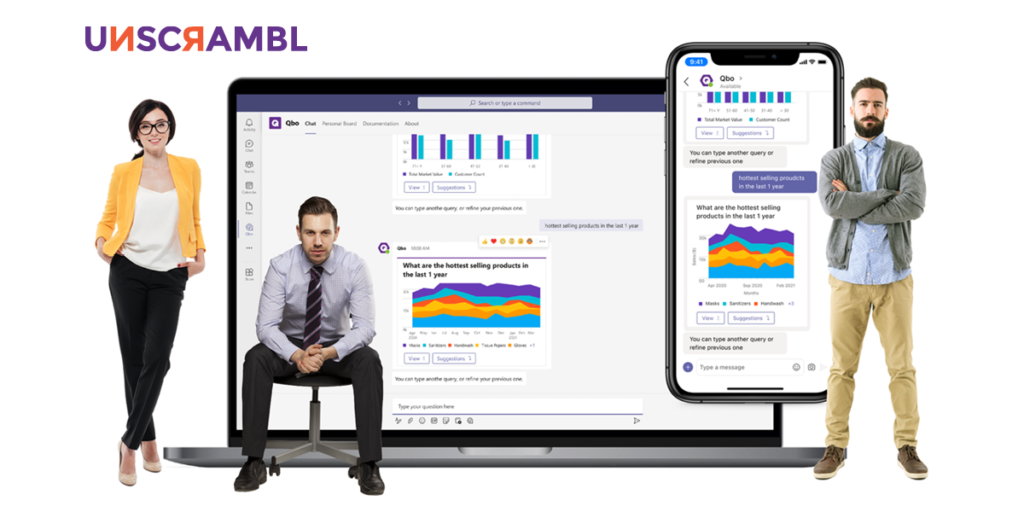 7 Minutes
7 Minutes

7 Elements To Establish For An Effective Data Strategy
While companies continue to invest in business intelligence and analytics solutions, with spending reaching $24 billion in 2019, many organizations still struggle to effectively harness the power of their data.
According to Gartner, 87% of organizations have low BI and analytics maturity while the deployment rate of BI solutions across an organization averages at only 17%.
Data is a strategic asset that requires not just the right business intelligence tool, but also the right processes and strategy to maximize its full potential. Appointing a chief data officer is a great starting point, but that should be part of an overall data strategy.
Accurate and swift data-driven decision-making can only be achieved when there is a strategic action plan layered with realistic goals for data teams and users to follow.
No matter how intuitive the BI tool, without clear guidance, it will be difficult to glean actionable insights that can help a business optimize its operations while innovating ahead with new solutions.
In this article, you’ll learn how to establish your organization’s data strategy from scratch to help chart your data analytics efforts for better decision-making.
What Is A Data Strategy & Why It’s Important
A data strategy is an action plan that outlines how data will be used and analyzed to glean the most accurate, timely, and actionable insights to solve business challenges in the present and the future.
Having a robust data strategy allows organizations to utilize their wealth of data and business intelligence investments to achieve tangible business results while uncovering exciting revenue opportunities to grow the business.
It helps business leaders to lay the framework to build data-driven organizations and better foster a data-driven culture. In fact, a study conducted by PWC found that highly data-driven organizations were 3x more likely to report improvements in their data decision-making versus those that weren’t.
A data strategy allows organizations to better:
- Understand the data being generated and how best to store it
- Develop a framework to analyze the right data to gain valuable insights
- Choose the right business intelligence and analytics solutions
- Drive business growth and value through enhanced decision making
- Empower analytics teams and employees with the right set of protocols to better foster a data-driven culture
A Data Strategy Today Is Part Of An Organization’s Overall Cloud-First Strategy
75% of organizations that utilize the cloud have a cloud-first strategy, underscoring the reliance and trust of cloud services which includes data storage and data warehousing.
With the rise of cloud data warehousing companies such as Snowflake (that recently IPO-ed for $33 billion), organizations are increasingly shifting from on-premise to cloud data warehouses for their data storage needs.
Because of this, a robust data strategy will need to take this into consideration and the advantages cloud data storage brings – such as independent scaling of your data needs.
While these considerations have to be factored into your data strategy, it is only part of it and at its core is the critical business objectives and vision that has to be accomplished.

How To Establish An Effective Data Strategy For Your Organization
While different business units might have their way of managing and utilizing data, having a unified strategy helps to develop a common road map to align the many interests and activities together.
This helps to ensure clearer use of the data while maximizing opportunities for collaboration between users.
1. Map Out Your Business Goals
Aligning your business goals with your data strategy is the first step to deriving real value from your data.
To begin, start to liaise with and interview the different stakeholders and business unit leaders within your organization to better understand their business operations, critical challenges, and strategic goals. This will help you to map out the key organizational goals and swiftly group up those that overlap and assign your final list of goals different priorities.
Subsequently, you will want to break down the goals into the different KPIs and measurable metrics that affect them to correctly identify the datasets you’d want to analyze as well as formulate the right type of questions to ask.
For example, if one of the strategic goals of your organization is to retain more customers next quarter, you might be inclined to narrow down your queries to data sets that affect customer satisfaction such as customer service calls, product pricing, and delivery timings.
2. Identify & Consolidate Your Key Data Sources
Every organization generates a myriad of data, both structured and unstructured. It is important to understand both the different types of data being generated and where they originate from.
As the world moves towards a future brimming with IoT devices, the amount of data being generated will increase exponentially, hence it makes good practice to get started by taking inventory of your key data sources.
For example, on a manufacturing floor, there could be various data sources such as status updates from machines and logistical data from freight shippers to manufacturing data from the production lines.
This not only gives teams a comprehensive view of the various data sources available but also aids during the optimization process when utilizing your insights to improve your business operations.
3. Establish Your Data Storage & Governance
Are you generating structured or unstructured data? How are you currently storing your data? Does your organization have the resources and technical expertise to develop and scale your data storage on-premise?
By understanding the resources present in your organization, you’ll be able to choose the right data warehouse investment to store your data and utilize it for future analysis.
Cloud data warehousing is fast becoming one of the most practical options that allows for unparalleled scalability while enhancing the use of your BI solution.
If you are also generating volumes of unstructured data, you can also consider using a combination of data hubs, data lakes, and Hadoop to augment and maximize your data warehouse investment.
By also establishing your data governance, you’ll define the roles and responsibilities of the individuals who have authority and control over the data assets in the organization.
This will allow for safer and better regulated access to individuals who can utilize the data for insights generation.
4. Selecting The Best Business Intelligence Tool
While many organizations are still utilizing dashboards & reports-based BI tools, it is key to select the next generation BI solution that streamlines and simplifies your organization’s data strategy.
Qbo, for example, is a BI tool powered by conversational analytics. This means users will be able to ask questions to their data like how they would in a normal conversation.
This helps to promote data democratization across your organization and empowers every individual with the ability to gain insights on demand.
Together with automated insights powered by machine learning, users will be able to get notified when a notable event that matters to them occurs, providing meaningful real-time insights.
5. Formulating The Right Data Analysis Approach
One of the most crucial aspects of your data strategy is establishing the playbook of how data analysis will be conducted.
With conversational analytics, the focus here is to understand the different types of approaches and questions you can take with your datasets and how they can be utilized to achieve the various goals of your organization.
The approaches & questions include:
Descriptive analysis – where users can use the data to gain insight into what is currently happening in the business.
“What is the daily sales of our product?”
Diagnostic analysis – where users can use data to better understand the cause and effect of a particular business situation or challenge.
“Why have our overall sales fallen over the last 6 months?”
Predictive analysis – where users can use data to gain insight into potential future events or decisions.
“Will our sales continue to fall over the next quarter?”
Prescriptive analysis – where users can gain actionable insights or instructions on how to reach the desired outcome.
“Which customer demographic should we market to for the highest profitability?”
By understanding these types of analytics, you’ll be able to formulate the right data strategy according to what is most critical to reach your business goals.
Planning to open new outlets in the near future? Then your data analysis will be more geared towards predictive and prescriptive questioning.
6. Turning Insights Into Actionable Plans To Drive Change
Insight generation is important, however, your data strategy also needs to provide recommendations on how to turn the insights into actionable solutions that drive tangible results.
While your BI tools like Qbo will deliver the most intuitive visualizations possible for your insights, it is still incumbent on your team to present them in a way that is impactful and engaging.
Your data strategy should also include a data-driven storytelling process you can use to educate your users and business leaders. This will help not only with internal presentations of insights to internal stakeholders but also aid your data-driven presentations to investors, customers, and the press.
Combined with the right visualizations, your data strategy should equip teams with the right framework to weave a compelling narrative around the insights generated to get executive buy-in to execute upon your findings.
7. Establishing Your Team Roles & Responsibilities
With Qbo, your data strategy will be able to focus on the more practical application aspects of business intelligence, instead of data preparation and processing that were traditionally handled by teams of IT experts.
By analyzing the strengths, weaknesses, and skills of your users, you’ll be able to organize them to fulfill the roles of a modern analytics team.
These include the business optimizer that utilizes insights to optimize existing processes for ‘quick wins’ as well as the business leader that liaise with key management figures and communicates the commercial value of the insights to gain approval to execute on the solution.
By assigning the right responsibilities to the right people, your data strategy will help to establish the right legacy and organization structure that will last and better transform your organization into a data-driven success story.

Establish Your Data Strategy With Qbo Today
At Unscrambl, we developed Qbo, your personal data analyst that empowers each and every of your team members to engage with your data and gain instantaneous insights on demand.
Thanks to the power of conversational analytics, you can streamline your data strategy, focus on the business applications of analytics and leave the heavy lifting to our BI tool.
Give Qbo a try with a 14-day free trial and start making better data-driven decisions while establishing a data-driven culture for your organization!



